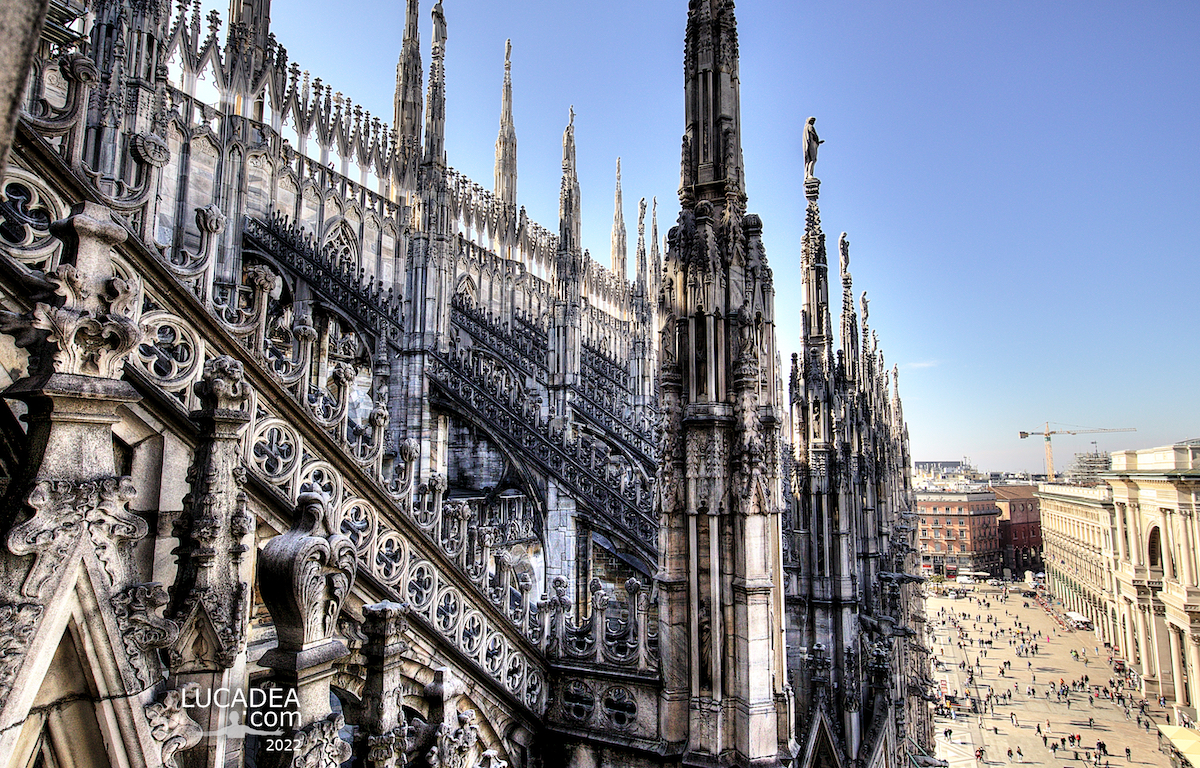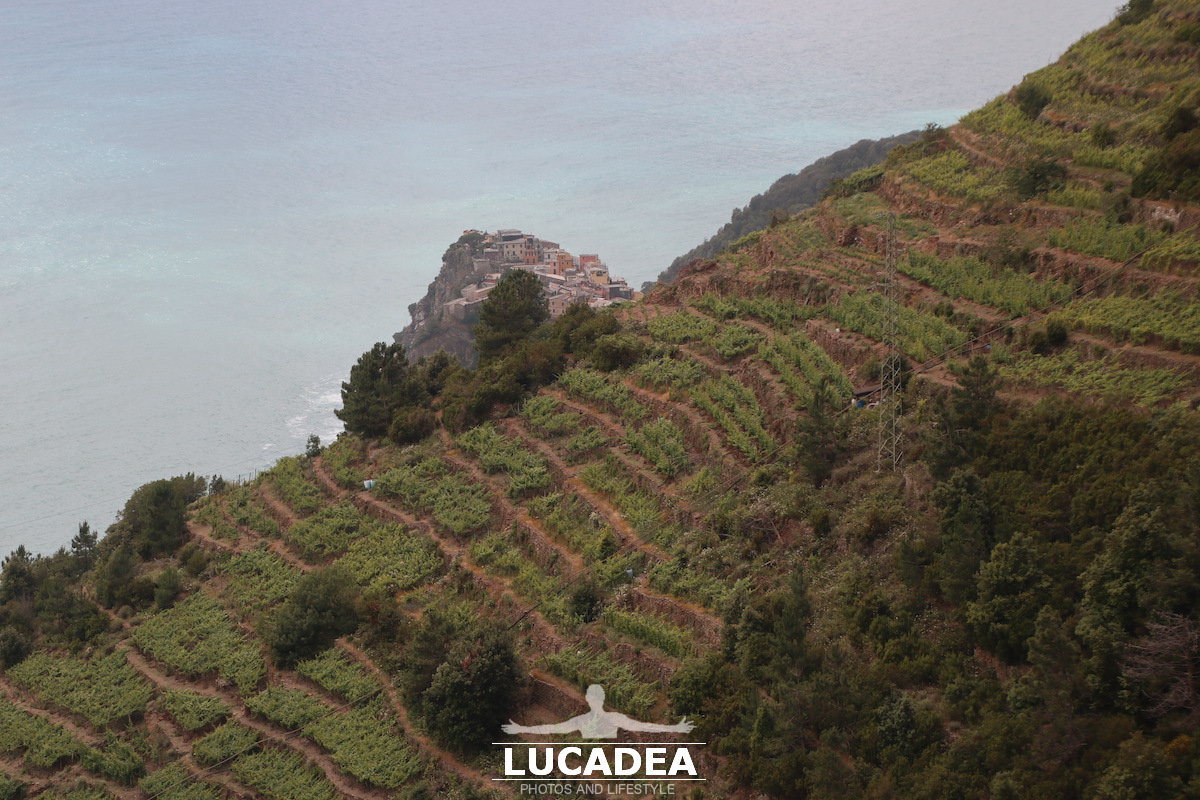Le guglie del Duomo di Milano: icone di eleganza e storia.
Il Duomo di Milano, con la sua maestosa presenza e la sua straordinaria bellezza, è uno dei capolavori architettonici più iconici d’Italia e del mondo intero. Questa struttura gotica, che domina il cuore della città, è conosciuta per molti dettagli suggestivi, tra cui le sue impressionanti guglie. In questo articolo, esploreremo la storia e l’importanza delle guglie del Duomo di Milano.
Le guglie, o pinnacoli, sono elementi architettonici slanciati e appuntiti che adornano la sommità del Duomo. Rappresentano uno dei punti di riferimento più riconoscibili della cattedrale e sono una parte essenziale della sua identità. Le guglie sono situate sulla sommità delle torri, delle facciate e della navata centrale del Duomo, conferendo alla struttura una silhouette distintiva e suggestiva. Anche gli archi del Duomo di Milano non sono solo elementi strutturali, ma anche opere d’arte in sé. Le loro forme e proporzioni sono state progettate con grande cura per garantire un aspetto armonioso e suggestivo. Ogni arco è ornato con dettagli scolpiti e decorazioni gotiche che rappresentano figure religiose, scene della Bibbia e motivi floreali. Queste decorazioni rendono gli archi veri e propri capolavori di artigianato e design.
La costruzione del Duomo di Milano ebbe inizio nel XIV secolo, sotto la guida dell’arcivescovo Antonio da Saluzzo, ma il suo completamento richiese diversi secoli. Le guglie furono aggiunte durante i lavori di restauro del XIX secolo, quando l’architetto principale, Carlo Amati, decise di abbellire il Duomo con questi elementi gotici. Le guglie furono disegnate in modo da armonizzare con l’architettura gotica esistente del Duomo, creando un’armoniosa fusione tra lo stile originale e il nuovo.
La costruzione del Duomo di Milano ebbe inizio nel XIV secolo, sotto la guida dell’arcivescovo Antonio da Saluzzo, ma il suo completamento richiese diversi secoli. Le guglie furono aggiunte durante i lavori di restauro del XIX secolo, quando l’architetto principale, Carlo Amati, decise di abbellire il Duomo con questi elementi gotici. Le guglie furono disegnate in modo da armonizzare con l’architettura gotica esistente del Duomo, creando un’armoniosa fusione tra lo stile originale e il nuovo.
Oltre a essere elementi decorativi, le guglie servono anche a scopi pratici. Durante i restauri del XIX secolo, furono realizzate con materiali leggeri e resistenti, tra cui il ferro, al fine di resistere alle intemperie e alle oscillazioni termiche. Le guglie fungevano da contrappeso, riducendo il peso complessivo del tetto e stabilizzando la struttura. Inoltre, alcune di esse fungevano da croce direzionale, indicando ai naviganti la direzione di Milano quando venivano avvistate da lontano.
Oggi, le guglie del Duomo di Milano sono un’attrazione turistica di fama mondiale. Visitatori provenienti da tutto il mondo si affollano per ammirare questi spettacolari elementi architettonici e per godere della vista panoramica sulla città che si può ammirare dal tetto del Duomo. Le guglie non sono solo testimoni della storia e della cultura di Milano, ma sono anche un simbolo di innovazione e bellezza architettonica.
In conclusione, le guglie del Duomo di Milano sono un esempio straordinario di come l’arte, la religione e la funzionalità possano fondersi in un’unica struttura. Questi elementi gotici slanciati non solo adornano il cielo di Milano, ma raccontano anche una storia di impegno, perseveranza e bellezza intramontabile. Sono una testimonianza della grandezza umana e dell’abilità architettonica che continua a catturare l’immaginazione di coloro che le contemplano.
Hai mai visitato il Duomo di Milano? Aggiungi un tuo comment or go to the bottom of the site to read what other visitors have written.
Photo taken with Canon EOS M100 and lens Canon EF-M 11-22.
Questo è il sito ufficiale del duomo: duomomilano.it.
Simbolo del capoluogo lombardo, e situato nell’omonima piazza al centro della metropoli, è dedicata a Santa Maria Nascente. È la chiesa più grande d’Italia.
Continue and learn more on Wikipedia
Here is where the cathedral is located:
The spiers of the Milan Cathedral: icons of elegance and history – Les flèches de la cathédrale de Milan : icônes d’élégance et d’histoire – Las agujas de la Catedral de Milán: iconos de elegancia e historia – As torres da Catedral de Milão: ícones de elegância e história – Die Türme des Mailänder Doms: Ikonen der Eleganz und Geschichte – Những ngọn tháp của Nhà thờ Milan: biểu tượng của sự sang trọng và lịch sử – 米兰大教堂的尖塔:优雅和历史的象征 – ミラノ大聖堂の尖塔: 優雅さと歴史の象徴
The text of the post was written with the help of ChatGPT, a language model from OpenAI.








